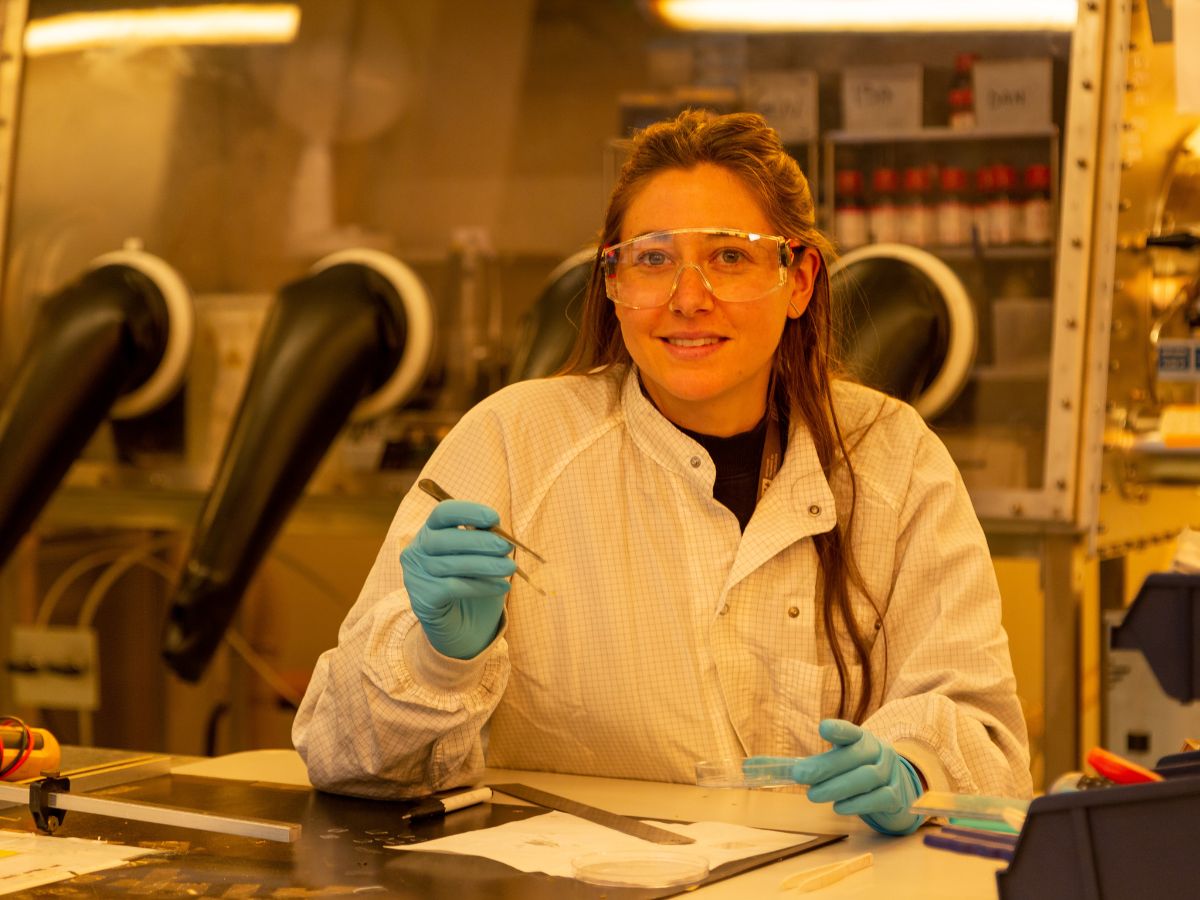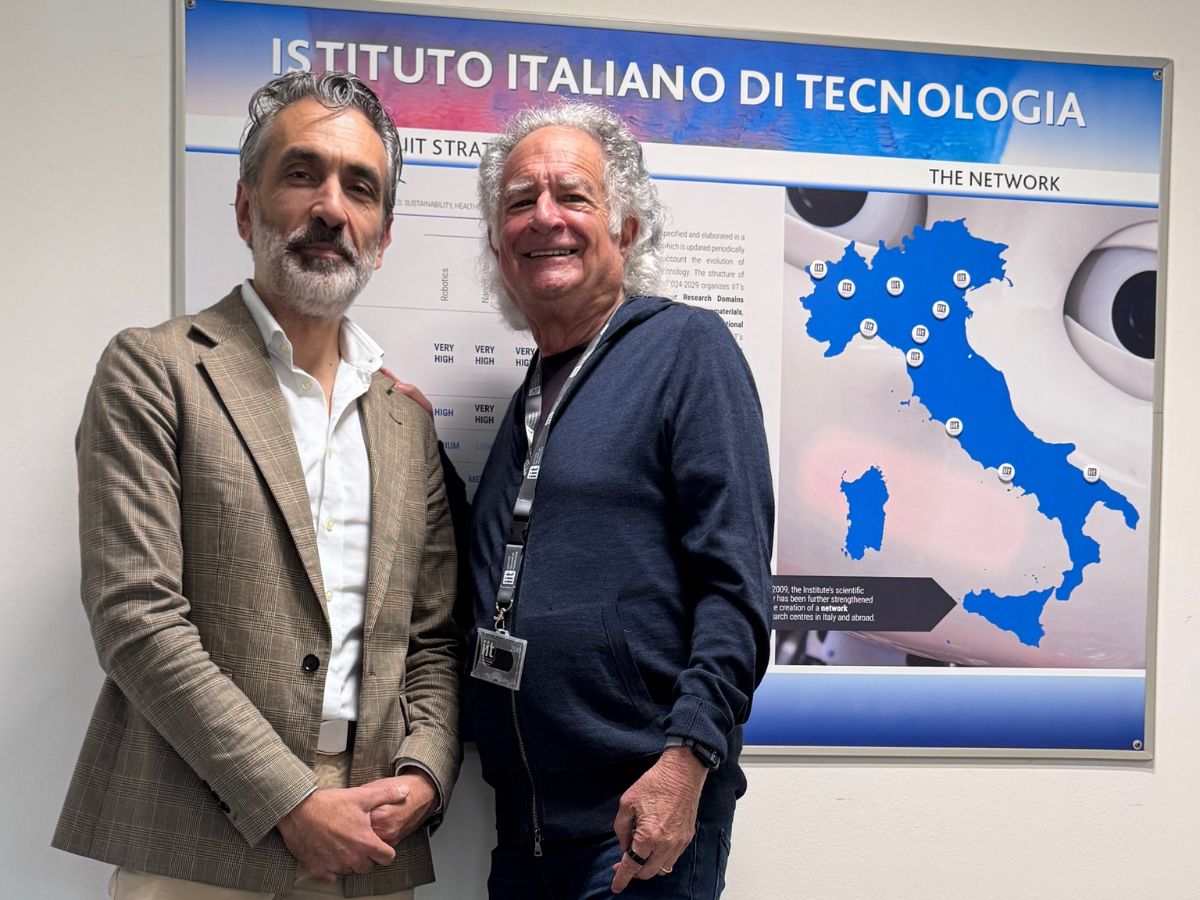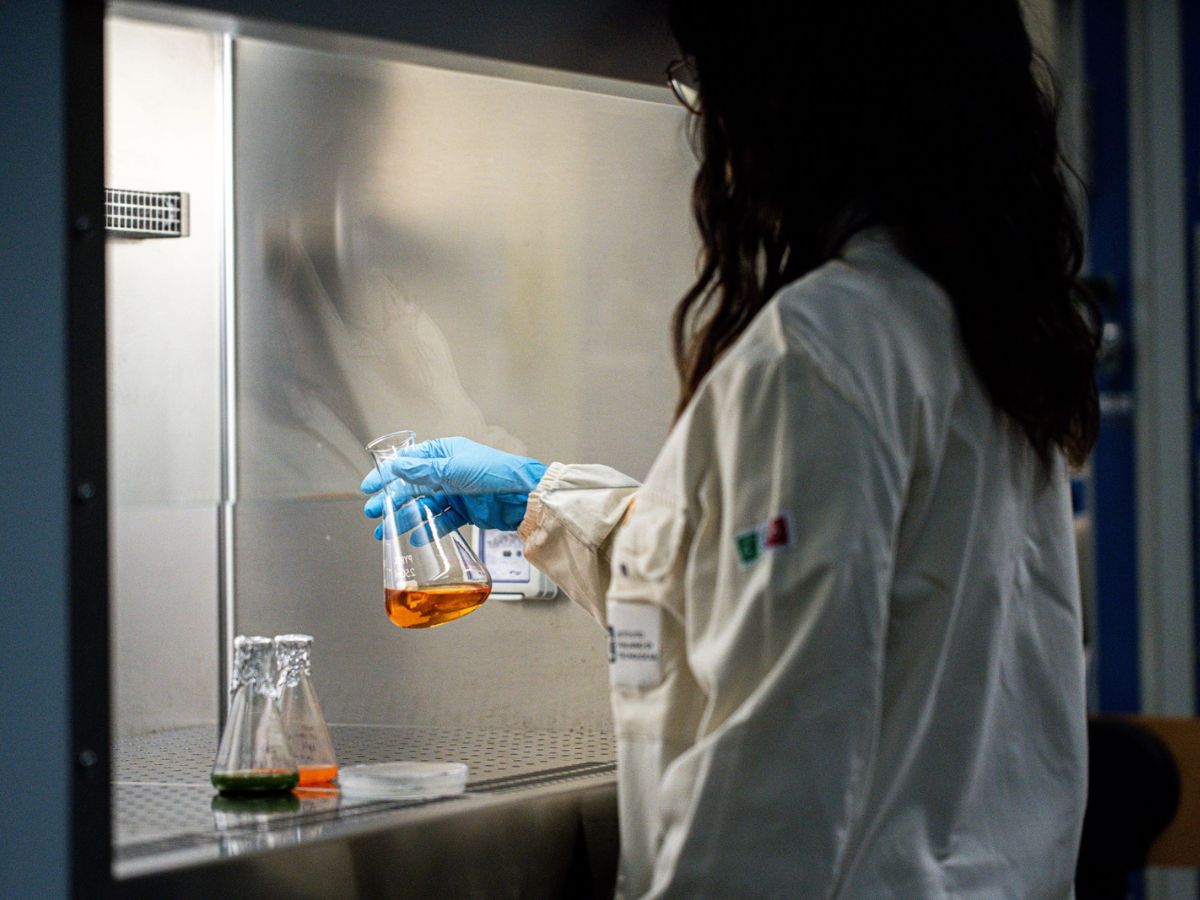Isabella Poli, an engineer specialized in sustainable energy and chemical technologies, works at the Italian Institute of Technology (IIT) in Turin, within the Center for Sustainable Future Technologies. Her research focuses on developing innovative semiconductor and conductor materials that, through photocatalytic reactions, can generate solar fuels from water and from CO₂ captured directly from the atmosphere. These materials are highly porous and can also remove pollutants from water through both catalytic and physical reduction processes. Sustainability is a key principle not only in the applications of these materials but also in the way they are produced.
After earning a bachelor’s degree in Energy Engineering at Politecnico di Milano, a master’s degree in Sustainable Energy Technologies at TU Delft, and a PhD in Sustainable Chemical Technologies at the University of Bath, Isabella Poli joined IIT in 2019. She first worked with the Advanced Materials for Optoelectronics group and now coordinates the Applied Energy Materials and Technologies group at the Center for Sustainable Future Technologies, an interdisciplinary hub created in collaboration with Politecnico di Torino.
Her research focuses on the synthesis and processing of new materials for photoelectrochemical and photocatalytic reactions. These are materials capable of using sunlight to drive processes such as water splitting, carbon dioxide reduction, or the photodegradation of organic pollutants.
What is your research focusing on in particular?
«We are mainly working on semiconductors—materials that can absorb sunlight and convert it into another form of energy. Before joining IIT, I started with photovoltaics, where solar energy is converted into electricity. Now my focus is on materials that convert sunlight not into electricity but into chemical energy, which can then drive different reactions.»
Can you give some examples?
«Of course. One example is water splitting, carried out by photocatalytic systems that separate water into hydrogen and oxygen. This process produces green hydrogen, one of the most promising fuels of the future—a true “solar fuel.”
Another example is the reduction of carbon dioxide, where CO₂ is transformed into useful substances such as formic acid or carbon monoxide. These products offer a more sustainable alternative to those derived from fossil fuels. At the same time, this process helps remove CO₂ from the atmosphere, recycling it into valuable resources for the chemical industry and other fields.»
How do the new materials you develop work in this context?
«We are synthesizing functional materials that capture sunlight and use it as a catalyst for chemical reactions. Our aim is also to design materials with very high porosity, meaning a very large surface area in contact with the reactants. The larger the surface area, the more efficient the reaction becomes. These microporous materials can be compared to sponges. The idea is to combine such “sponges” with semiconductors, making them able to absorb sunlight and generate electric charges, much like solar panels do. However, unlike solar panels where the charges are extracted to power an external circuit, here the charges remain on the material’s surface and directly drive chemical reactions with water or other molecules.»
What are the practical applications of these techniques?
«In water photocatalysis, the main goal is to produce green hydrogen, a sustainable fuel. Another important application is pollution control, particularly the breakdown of organic contaminants in water, such as dyes. These large organic molecules are difficult to filter out, but they can be decomposed through electrochemical reactions. By breaking their molecular bonds, we can ultimately reduce them to carbon dioxide. This makes the process very effective for treating water pollution.»
Do you also apply sustainability principles when creating new materials?
«Yes. We strive to design high-performance materials without relying on toxic substances, such as hazardous solvents that are still commonly used in this field. For example, we are developing mechanochemical synthesis techniques, where materials are created in solid form without solvents. In practice, we place the reactants in jars with metal spheres and rotate them with a planetary motion—both around themselves and a central axis. The mechanical energy generated by friction between the spheres and reactants provides the energy needed for the chemical reaction. By adjusting the starting ingredients, we can optimize the process and obtain materials with the desired properties.»
What kind of starting materials do you use?
«We begin with substances known as precursors, which can be organic or inorganic, and combine them with modulators. The result is a crystalline material with a well-defined structure. It’s a bit like cooking: choosing the right ingredients is crucial to achieving the right final product. In the case of porous materials—specifically MOFs (Metal-Organic Frameworks)—we discovered that optimal porosity is achieved only by adding a small amount of methanol. So it is not a completely solvent-free process, but the quantity used is minimal compared to traditional methods, which usually require large amounts of solvents and toxic chemicals. While the quantities are limited in laboratory research, at an industrial scale toxic solvents can cause serious environmental issues. This is why our work represents sustainable innovation. Moreover, some solvents, such as DMFs, widely used in MOF synthesis, have recently been banned by the European Union, which makes it even more urgent to find alternatives.»
Can you give one last example of these applications?
«One area we are focusing on is the development of lead-free semiconductors. Lead is still a critical issue in today’s solar panels. On one hand, we are working to replace it with non-toxic materials; on the other, we are studying recycling methods to recover and reuse lead from existing panels. This also involves dealing with lead-containing wastewater, for which we are testing our hyperporous materials as effective absorbents.»





